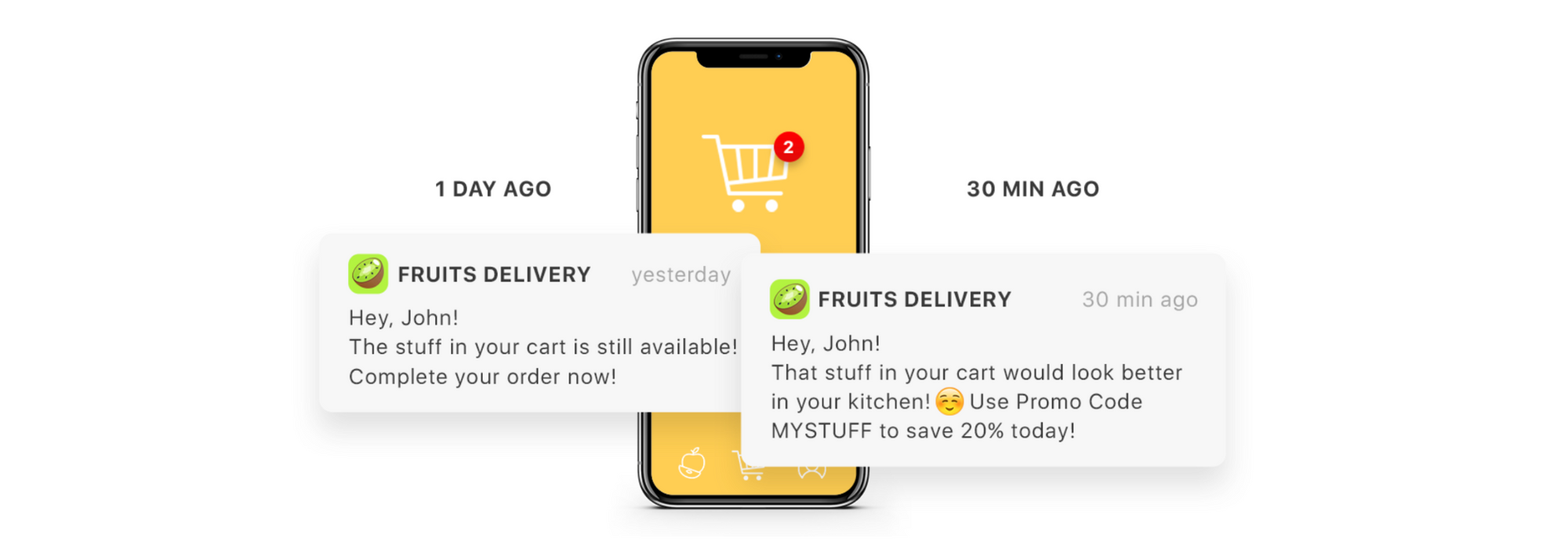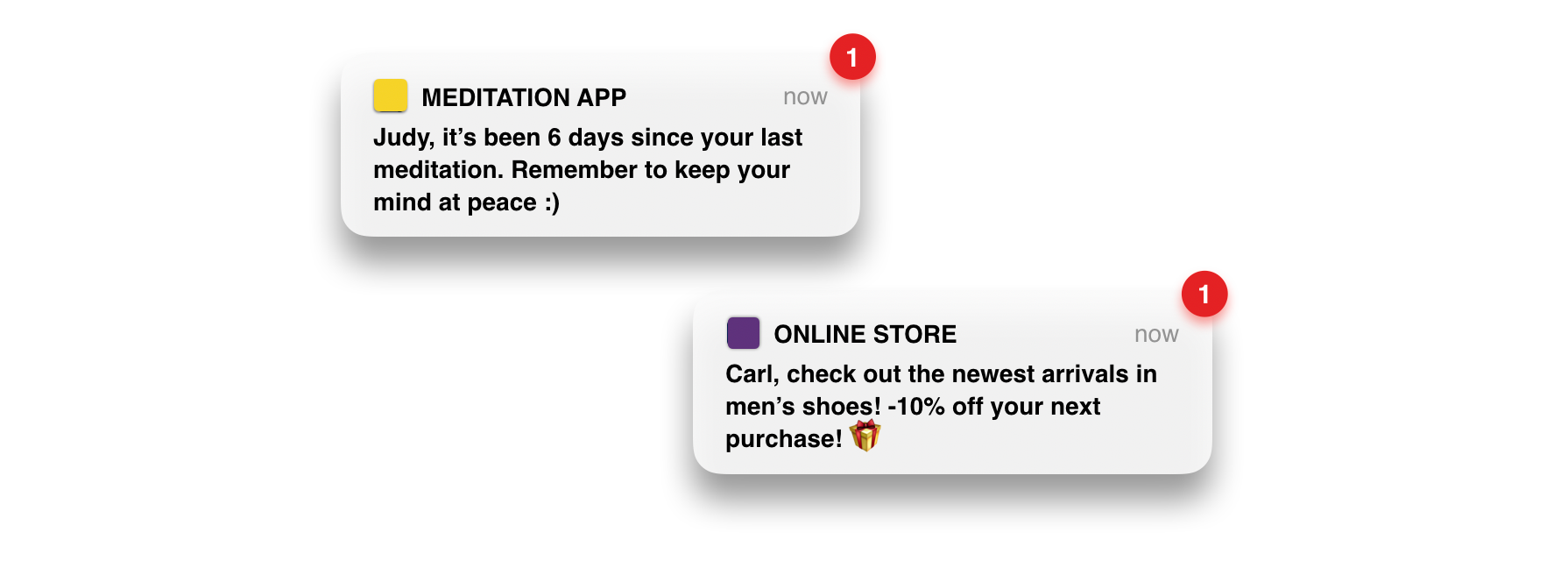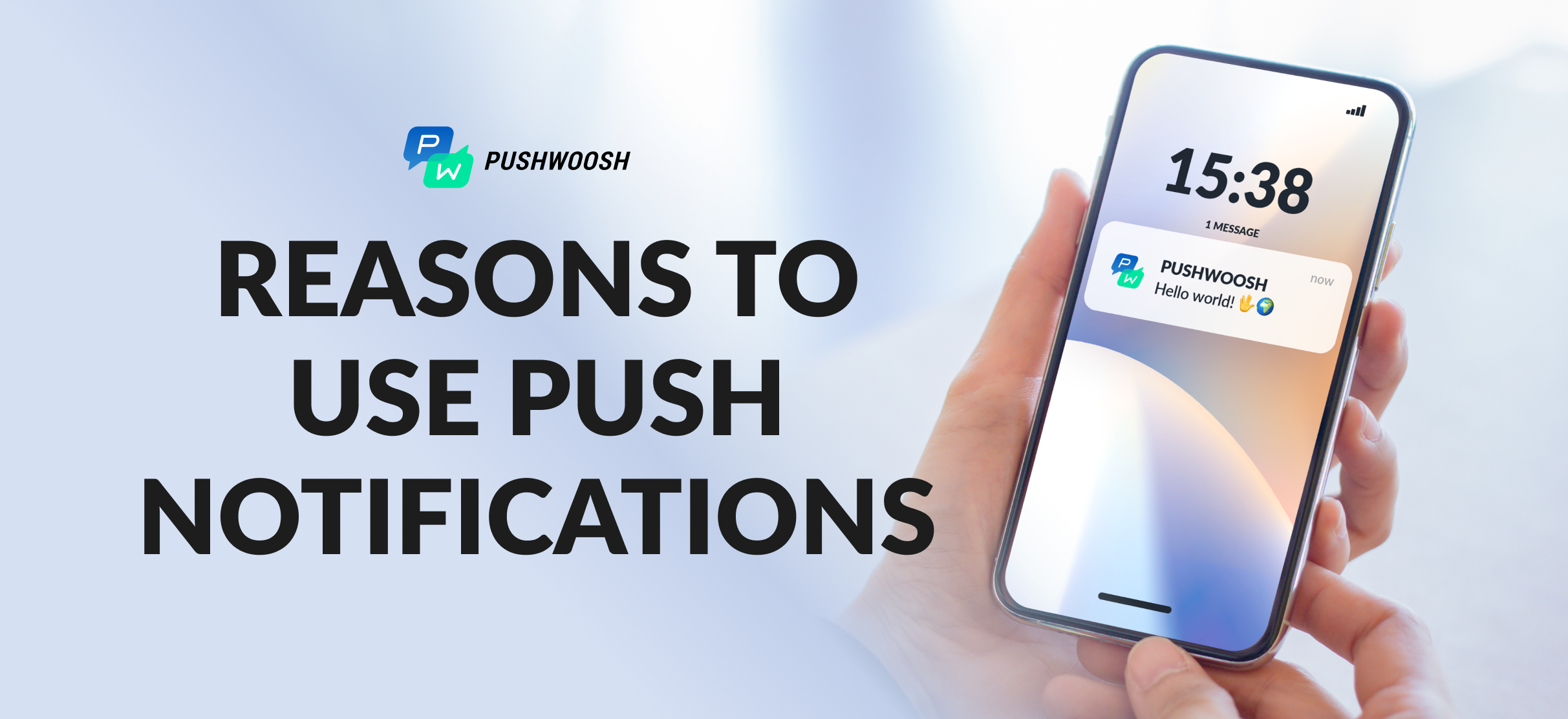Whether your business is mobile-first or "mobile-forced," there are plenty of ways it can benefit from using push notifications. With this channel, you can make your communications highly personalized, relevant, and sent at the most appropriate time.
Beyond this, here is what you can do with push notifications:
1. Gain new users
On your website, you can ask visitors to register on your business’s app or website. You can do this through your marketing software to create a loyal customer base. But what if they did sign up but did not complete the process? How are you supposed to keep them engaged? You can opt to remind them via your email drip campaigns, or you can take another route, such as push notifications.
As long as recent users give permission for you to send notifications to them, they will continue receiving these alerts unless they change the setting. You can use this opportunity to prompt them to complete their registration in your app. This way, you can gather actionable information that will enable you to personalize future interactions with them. On top of that, you can begin building a loyal customer base through this marketing tool.
2. Promote new products or offers
According to research posted on the American Marketing Association website, consumers have come to expect discounts from businesses, especially those in the retail sector.
However, not everyone can keep close tabs on the sales schedules of shops.
And even if you offer great savings, it would amount to nothing if the number of customers who bought your items is below your expectations. To mitigate this, you have to be active in communicating with buyers across multiple channels.
Take a cue from the e-commerce industry, for example.
Business of Apps cites in an article that this business category has the most users of push notifications (22.03%). The economic niche uses this as part of their omnichannel marketing strategies to let consumers know about new offers and discounts (83.33%) and to announce their latest products (50%).
And considering that 25.29% of users like to receive alerts from shopping and retail businesses, this is a marketing method that is worth considering in your own plan.
By doing so, you increase the likelihood of boosting your sales and enhancing your bottom-line during the promotional period.
3. Engage customers
Push notifications can boost customer engagement, especially when integrated with behavior-based messaging strategies. This involves sending push notifications based on a user's actions within the app or on your site. By doing so, you ensure that your messages are consistently timely, personalized, and highly relevant.
You can automate your messaging campaigns to deliver push notifications as soon as users complete specific actions, such as subscribing to a particular news category or adding a product to their shopping cart:

Increase user engagement throughout the lifecycle. Read the guide.
Another important aspect is crafting your push notification copy with precision for resonance and engagement.
5. Get feedback from clients
Actionable notifications are one of the push alerts that get a high rate of engagement from users. This is especially true for those that invite customers to offer their input and thank them for that. In this case, you can configure your marketing management software to tell your audience that their feedback would be helpful to your company.
You can do this immediately after the customer interacts with your customer service or if they recently bought something from your website, app, or brick-and-mortar store. If they had a great experience, they are more likely to give glowing reviews and five-star ratings. This way, you can count on their positive experience with your brand to increase your reliability and attractiveness to consumers.
However, this tactic does not work 100% of the time. Still, you can increase your chances of consumers engaging with your push notification by offering incentives. It could be a discount coupon, it could be a number of points that go towards your loyalty program, or it could be another exciting perk.
6. Retain users and drive repeat purchases
In the post-IDFA world, improving customer retention becomes more cost-effective than acquiring new customers. By tailoring push notifications to specific user segments, you can encourage customers to make repeat purchases and re-engage with their activities in the app.
Through the use of personalized push notifications, you can deliver exclusive offers and discounts, showing customers that you care and want them back, nurturing a loyal userbase:

Applying the best practices of push notifications
While push notifications on devices and web browsers have impressive engagement rates, using them too much would have drawbacks. Specifically, users are highly likely to mute your alerts for good. That is why it is important to keep the best practices for push notifications in mind:
- Timeliness: Make sure that you send notifications at the right time. For example, a customer has just purchased something from your web shop and is awaiting delivery. You can inform them through a push notification that their package is on its way.
- Relevance: Before you send a notification, you have to ensure your message is relevant to the receiver.
- Brevity: Nobody likes to have to read long messages on their notification board. Thus, you have to maintain the brevity of your alerts.
- Application: Push notifications work when implemented correctly. This means that you have to configure their automation, the segments to which certain messages are sent, and you have to be careful about the permissions that users provide. Because again, it matters whether the message is of any use to a person.
As long as you apply these practices to your push notification marketing, you can enhance your relationship with your customers.
Request a demo and see how push notifications can help your business grow:
Or just start using Pushwoosh for free!

